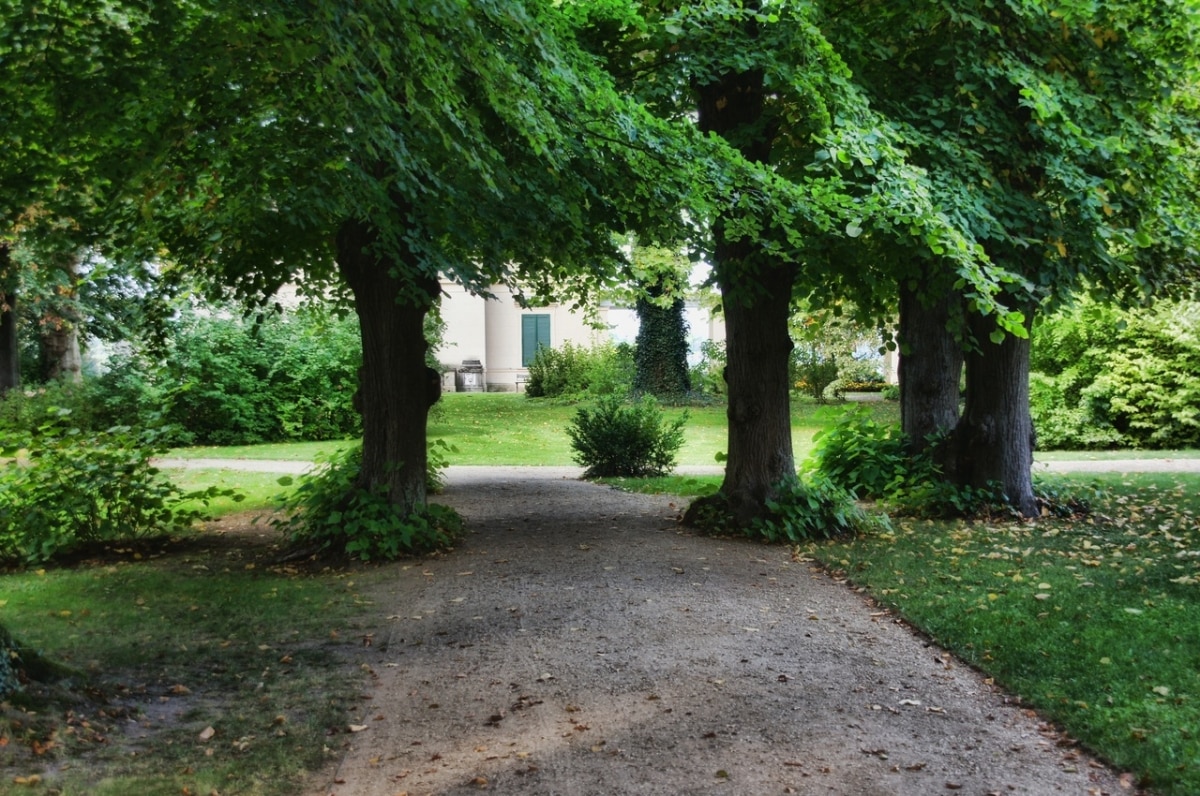
When the temperatures start to get too high, there is nothing better than sheltering under the canopy of a tree, since just below it there is a cooler microclimate. This is not only so because the leaves prevent the sun's rays from hitting the ground, but also because the water vapor they expel refreshes the environment.
On the other hand, shade trees, once they are big enough, allow us to grow other plants that need to be protected from the sun, such as ferns, for example. So, What are the most recommended to plant in a garden?
deciduous shade trees
deciduous trees are those that are left without leaves at some point in the year. In Spain, and in all the regions where the climate is temperate, we know those that come off them during the autumn and/or winter, when the temperatures begin to be cold; however, in tropical and subtropical regions there are also deciduous trees which remain 'naked' to better withstand the dry season.
These are some of the deciduous trees that provide a lot of shade:
Almond tree (Almond)
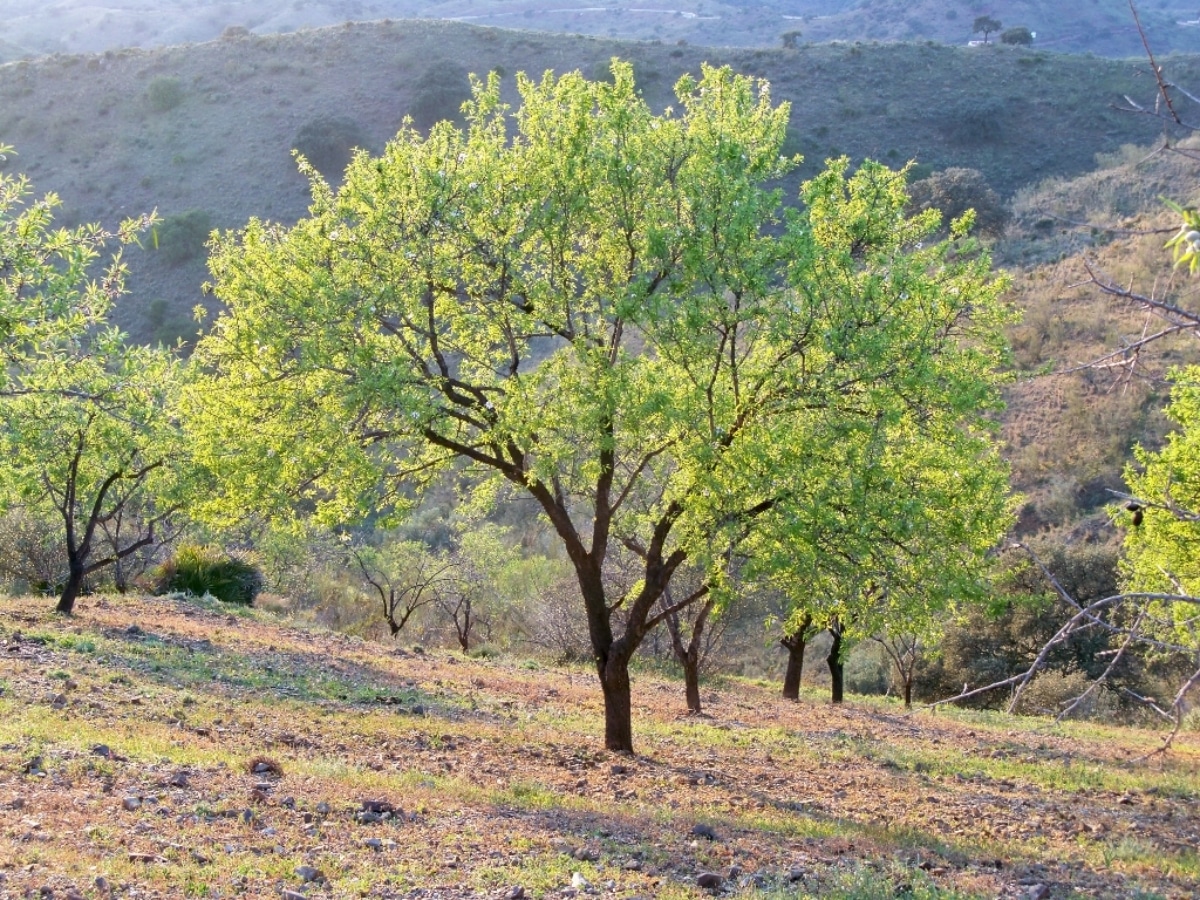
Image - Wikimedia / Daniel Capilla
Yes, I know that the almond it is a fruit tree, but there are many fruit trees that can be used as ornamentals, and the almond tree is one of them. It reaches a height of 10 meters, and develops a crown of up to 4 meters.. It branches a lot, so its shade is dense and cool. Its flowers are one of the first to appear in spring, and can even do so in January (mid-winter in the northern hemisphere). These are white and measure about 2 centimeters.
Resists drought well, but if many weeks go by without rain, it begins to lose leaves rapidly. For this reason, it is advisable to water it at least once a week during the summer, to ensure that it maintains its foliage until the temperatures begin to drop. Withstands up to -10ºC.
Tataria maple (Acer tataricum)
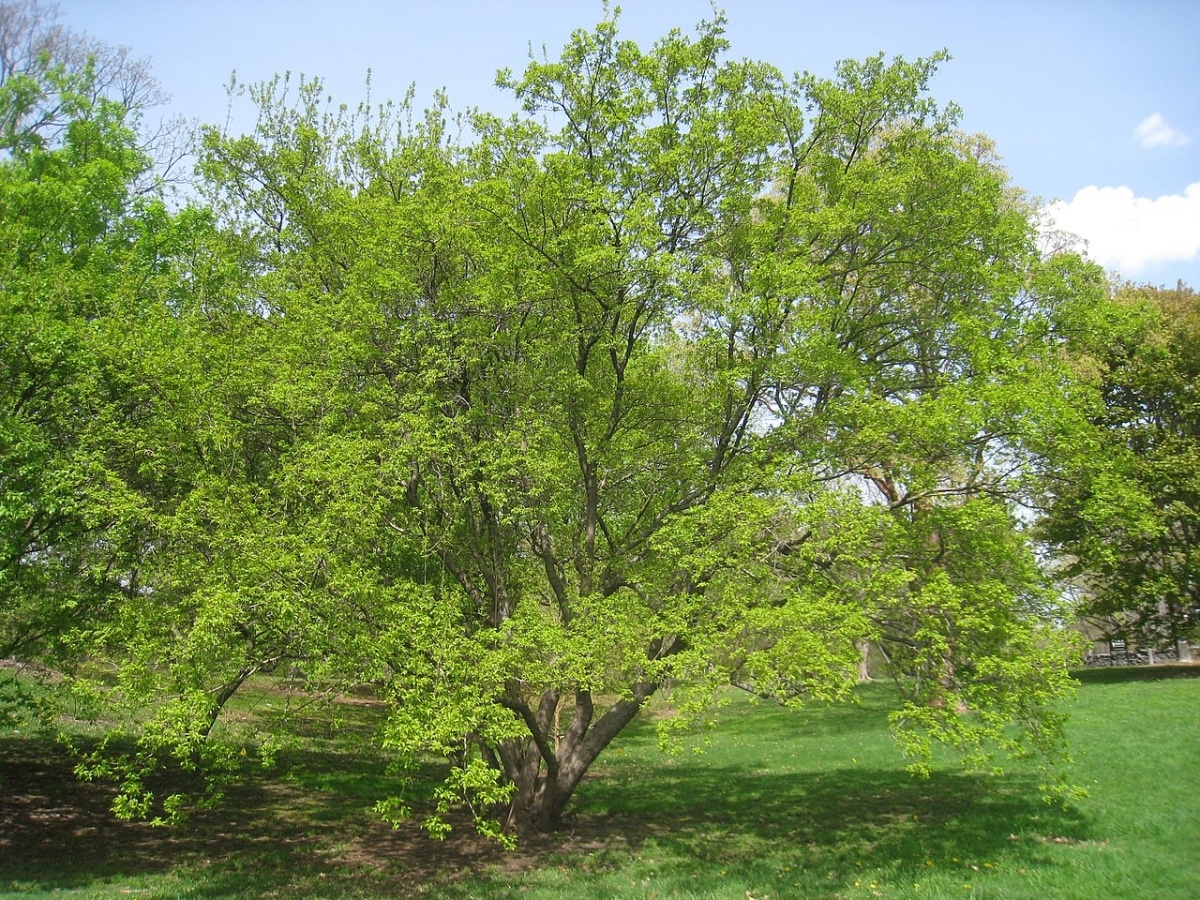
Tataria maple it is a tree that does not grow much, between 4 and 10 meters. In addition, it has a straight and short trunk, half a meter or so, so its crown starts very close to the ground. The leaves are green, simple and ovate, and fall off in autumn. It blooms in spring, but its green flowers can go unnoticed. The fruit is a reddish samara.
It is one of the few maples that, from experience, they do not fear the sun of the Western Mediterranean. I have one in a pot (in Mallorca), and I had it in a somewhat protected area, but when I exposed it to the sun, it was when it began to grow stronger. It is also very rustic, as it withstands frosts of up to -20ºC.
Horse Chestnut (Aesculus hippocastanum)
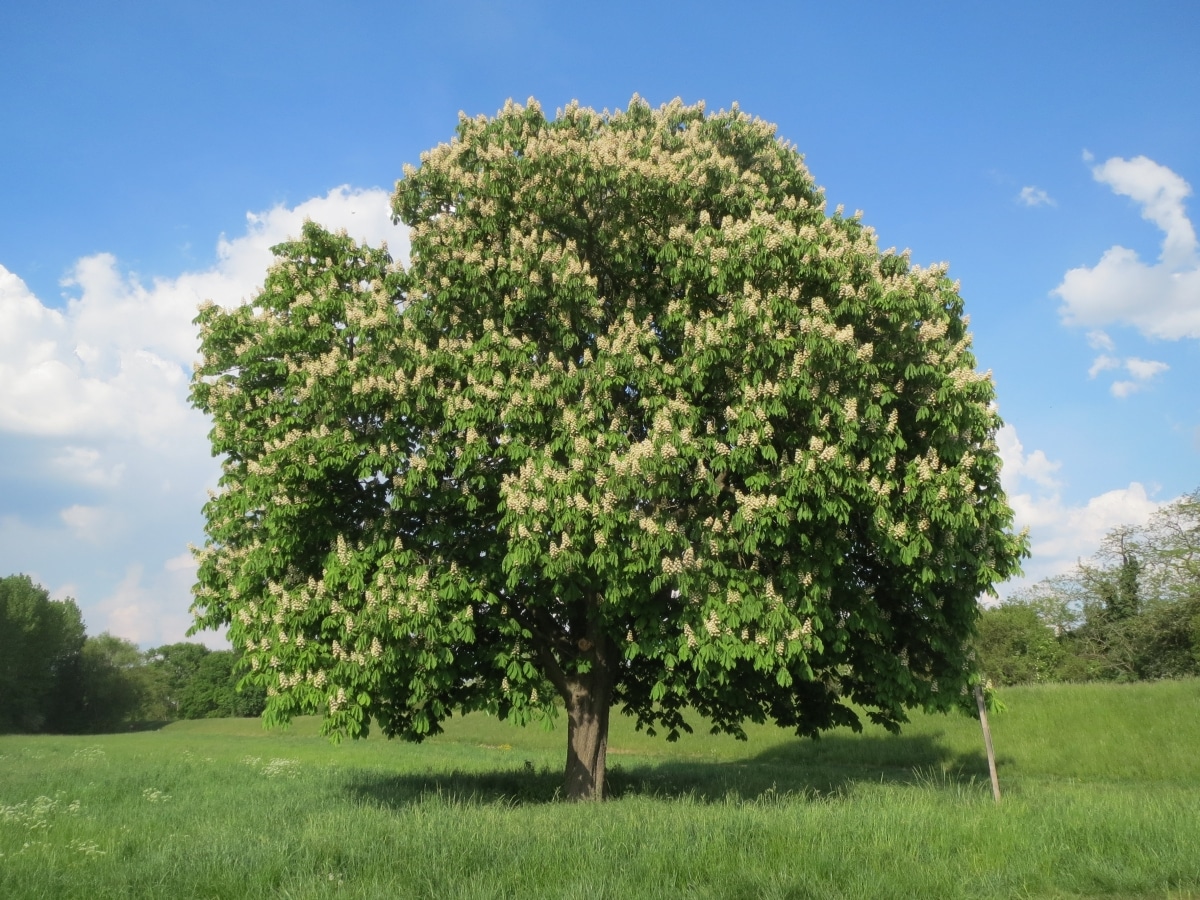
El horse chestnut It is a huge tree, which reaches a height of 30 meters, and which has beautiful palmate leaves, composed of 5 or 7 leaflets. It is not only tall, but also wide: its crown reaches 5 meters or more, and its trunk thickens up to 60-80 centimeters. Its flowers are grouped in inflorescences that sprout throughout the spring, when the leaves have already appeared.
It grows in almost any type of soil, but you should know that needs a lot of water. I do not recommend growing it in areas where drought appears in summer, such as in the Mediterranean for example. I have one in the south of Mallorca and I am convinced that if I watered it almost every day during July and August it would be more beautiful (I water it 2-3 times a week).
Another important fact is that is a species vulnerable to anthracnose, but based on personal experience, its appearance can be controlled and even prevented if it is treated with a polyvalent fungicide that clearly indicates that it is effective against this fungus. It has to be applied in spring, as soon as the leaves sprout, and carry out new treatments until the end of summer. Withstands frost down to -18ºC.
Catalpa (catalpa bignonioides)
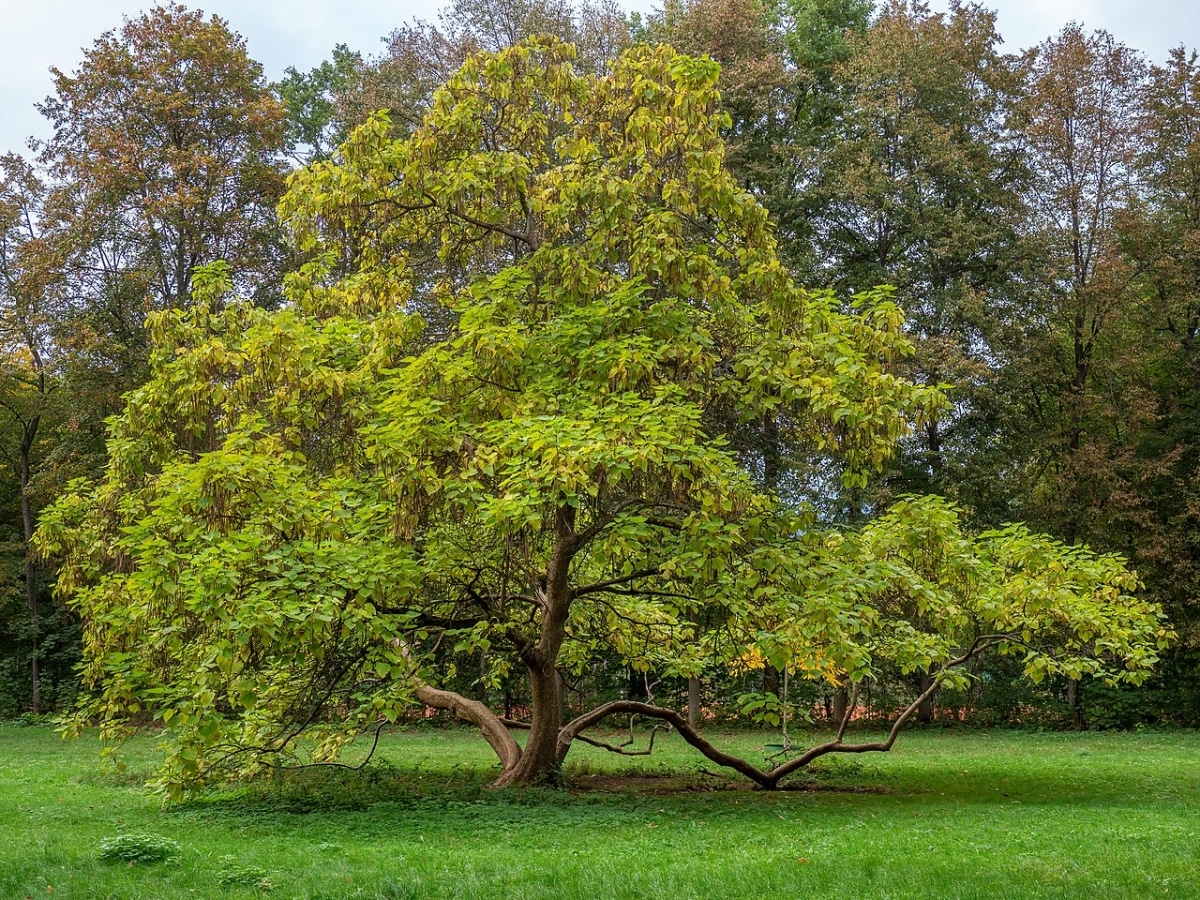
Image - Wikimedia / Ermell
catalpa It is a medium-sized tree, with a maximum height of 15 meters and a crown of 4-5 meters wide.. Its trunk is slender, more or less straight, and branches several meters above the ground. The leaves are ovate and large, emerging in early spring (as long as there is no frost during that season). It blooms in spring, they are white, and are grouped in inflorescences. Its fruit is an elongated capsule containing numerous small seeds.
It is a plant that, taking into account its characteristics, it is interesting to grow in medium and large gardens. It could also be kept in a small one, but in this case it would have to be pruned to maintain a narrower crown. It supports moderate frosts.
Flamboyant (Delonix direction)
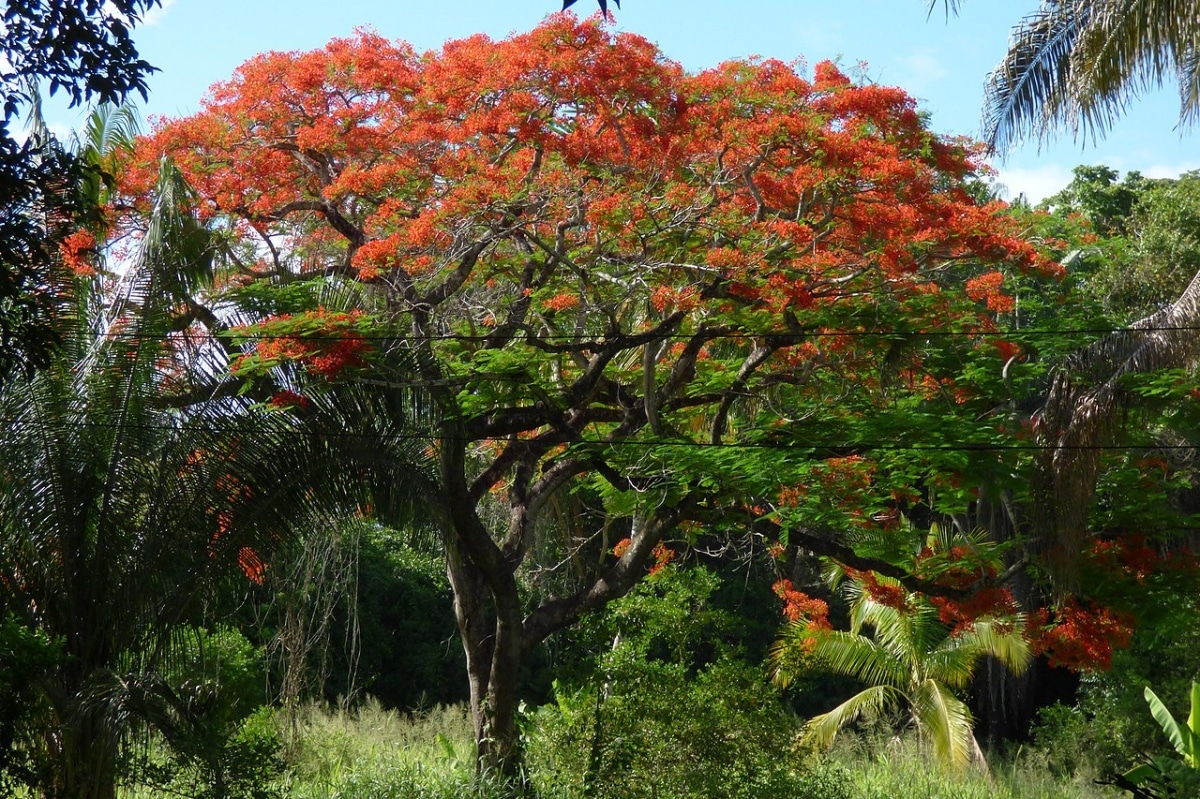
Image - Wikimedia / Alejandro Bayer Tamayo
El flamboyan It is one of the trees that, in its place of origin (Madagascar), loses its leaves to better cope with the dry season. It is a measure, perhaps desperate, but it is the one that allows you to save water during those weeks in which not only it does not rain or it rains very little, but also the temperatures can be very high. But, in slightly more benevolent climates, such as in the humid tropics, it behaves like a perennial tree, since it does not need to shed its leaves (except, of course, when they reach the end of their life and are replaced by new ones).
when cultivated, reaches an approximate height of 10 meters. From a young age he begins to develop a parasol crown, which can reach 6 or 7 meters if the conditions are really good for him. Its flowering occurs in spring, and the flowers are red, or more rarely orange. Unfortunately, it is very sensitive to frost.
Evergreen Shade Trees
evergreen trees are those that are always green, that is, they always have leaves. But that does not mean that they do not renew them, because they do. Some drop a few at a time throughout the year, while others drop only the leaves from part of their crown. The latter are known as semi-evergreen or semi-deciduous trees.
These are the ones we recommend:
Magnolia (magnolia grandiflora)
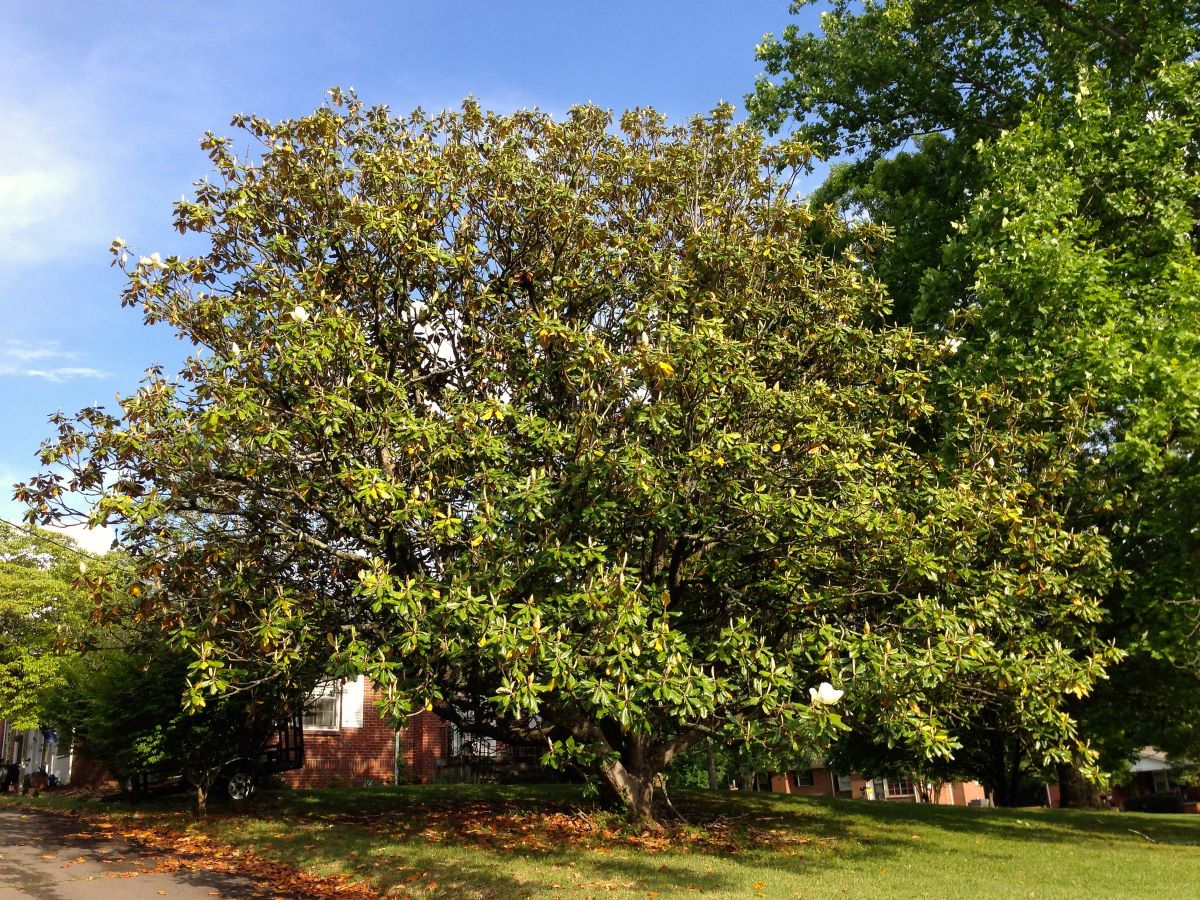
Image - Flickr / vhines200
La magnolia, or magnolia, It is a slow-growing tree that reaches 30 meters in height. (being the normal 10 meters) and that develops a wide canopy of 5-6 meters. The leaves are very large and shiny, but its flowers are undoubtedly its main attraction. These sprout in spring-summer, measure about 30 centimeters in diameter, are white and smell very good.
However it has to be planted in acid soils, because in the clay it will not be able to grow. Likewise, it needs a regular supply of water, since it suffers a lot with drought. It resists up to -20ºC.
Olive (Olea europaea)
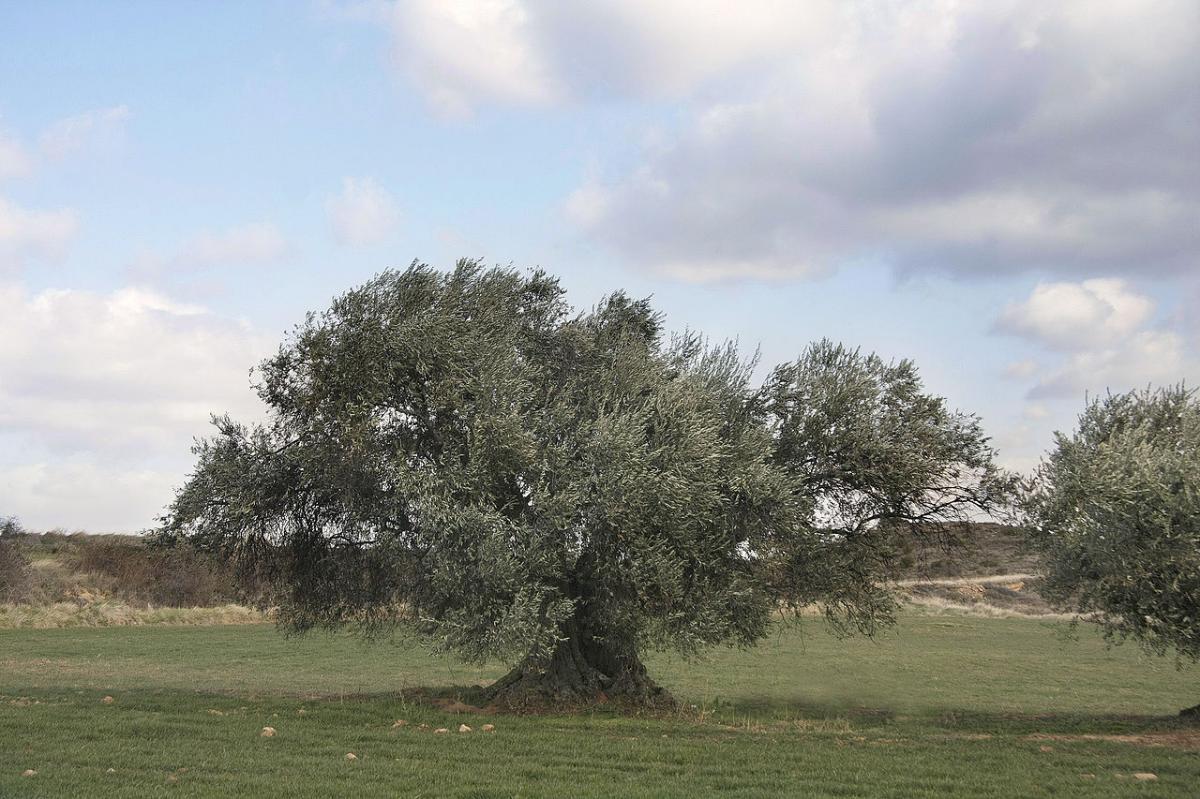
Image - Wikimedia / Joanbanjo
El olive It is a tree that, although it can reach 15 meters in height, it is very difficult for it to grow so much in cultivation, since as its fruits are edible, it is important that it has a low crown to collect them all. Said fruit is the olive or olive, which can be eaten fresh from the plant, or as an ingredient in some recipes, such as pizzas. Also, and no less important, olive oil is extracted, widely used for cooking.
Being native to the Mediterranean, withstands drought and heat without problems, as long as it has been planted in the ground for at least a year. Withstands frost down to -7ºC.
Pohutukawa (metrosideros excelsa)
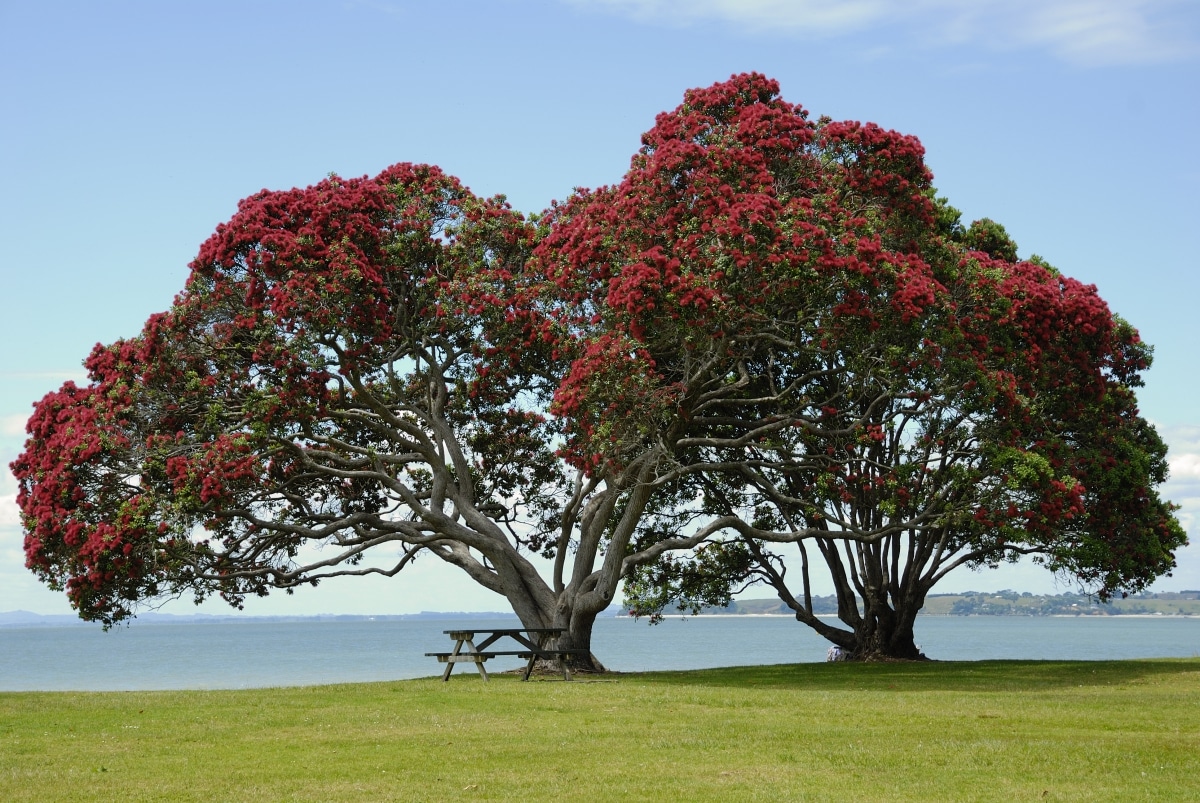
Image – Wikimedia/Ed323
the pohutukawa It is a tree that can reach 20 meters in height and develop a crown of up to 5-6 meters.. It is, therefore, a large plant that is filled with red flowers in summer and that, moreover, grows in almost any type of soil.
As if this wasn't enough, withstands the cold without problems, although if there is frost it will need protection so that it does not suffer damage.
Australian oak (Robusta grevillea)
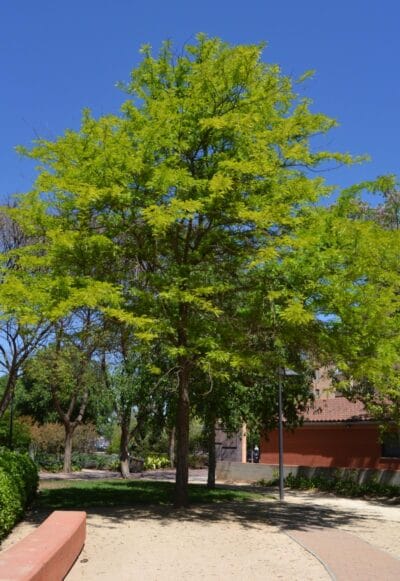
Image - Wikimedia / Joanbanjo
The Australian oak is actually a Grevillea, that is, a tree that has nothing to do with oaks (Quercus). It reaches a height of 18-30 meters, developing a straight trunk that branches about 2-3 meters above the ground.. Its leaves are green, bipinnate and up to 15 centimeters long. The flowers sprout in inflorescences in spring, and are orange or yellowish in color.
Very interesting for medium-sized gardens, where if it is planted in rows, for example, it will be magnificent. Withstands up to -8ºC.
Gabon tulip tree (Spathodea campanulata)
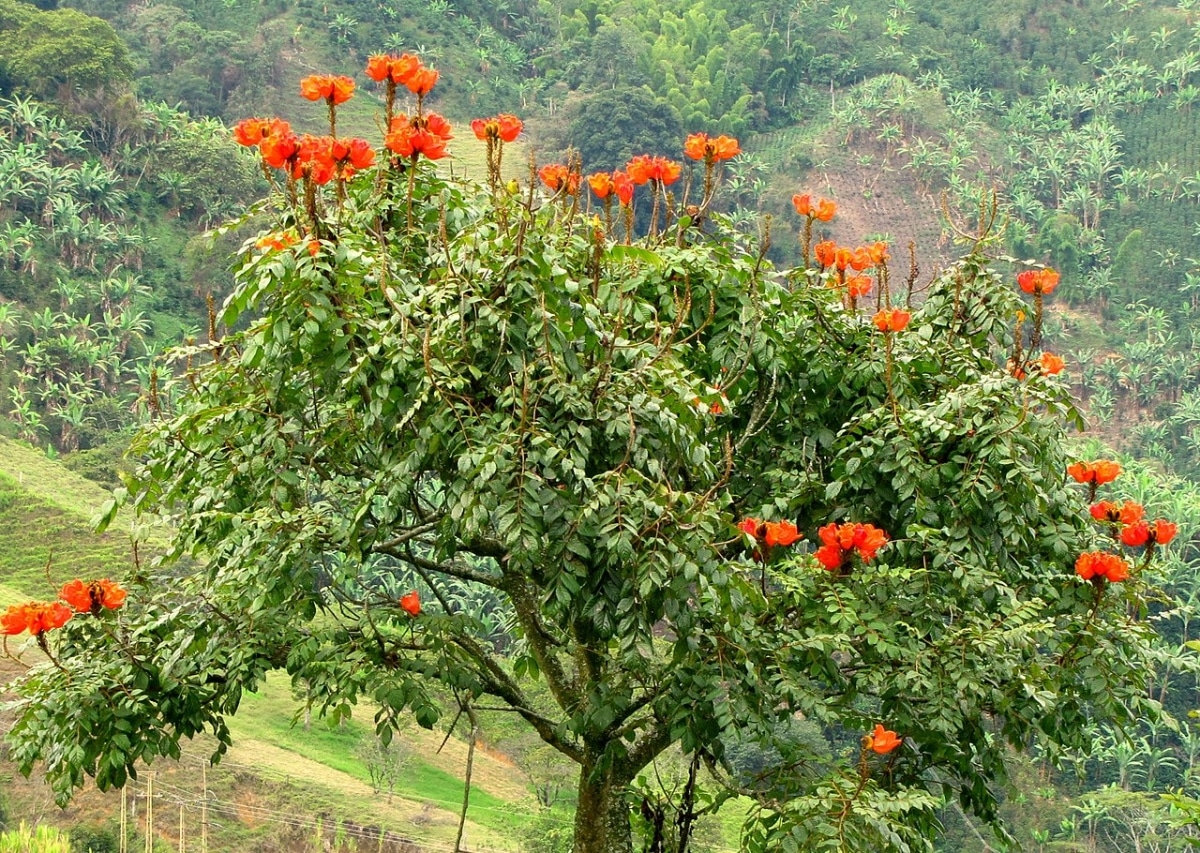
Image - Wikimedia / Alejandro Bayer Tamayo
The Gabonese tulip tree is an evergreen tree, but in dry and/or cold climates, it behaves as deciduous. It reaches 30 meters in height if the conditions are good, but in cultivation it is more likely that it will not exceed 10 meters. It develops a rounded crown, wide at its base, measuring up to 4 meters. Produces large, bell-shaped red flowers in spring.
It is a subtropical species that can withstand cold but not frost (only down to -1ºC once it reaches adulthood and is acclimatized). Likewise, it is important that watering is not neglected so that it does not run out of its beautiful foliage.
Did you know these shade trees?